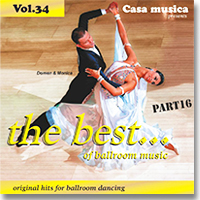

Troilo is more sophisticated, moving between staccato and legato (“ Milongueando en el cuarenta”, 1941). the extreme beat of “ Racing Club”) whilst Caló’s beat is smooth and soft (“ Al compás del corazón (Late un corazón)”). D’Arienzo’s beat is staccato, a development that reaches its zenith with Biagi (e.g. A first attempt to discern and feel these qualities would be to classify them into polar opposites: hard or soft, strong or weak, sharp and choppy (staccato) or rounded and smooth (legato). The tango orchestras mix and prioritise these elements differently and this is one way to feel the orchestras and to distinguish them.īeats are not all the same -they have their qualities-, and each orchestra has a different quality to its beat. Hearing these words is sure to change your relationship to the song, and to arouse feelings, perhaps memories, which can then become enfolded into the music and expressed in your dancing. As an example, let’s take Ada Falcón’s 1940 recording of “ Te quiero” (“I love you”) with the orchestra of Francisco Canaro. This element is hidden if we don’t speak Spanish. The melodic line is vigorous and clear, and thus easy to follow.įinally we have the lyrics – meaning. For an earlier example, we can turn to Lucio Demare’s iconic 1942 recording of “ Malena”, his own composition. This is something we hear developing in the later recordings of Di Sarli.

The more romantic orchestras prioritise the melody over the beat and the rhythm. The melody is what we sing to ourselves, or to others, when we recall a song: the tune. A classic example is the opening of “ Milongueando en el cuarenta”, recorded by Aníbal Troilo in 1941, with its tumbling syncopation: 1-2-3, 1-2-3, 1-2-3, 1-2-3, 1-2, 1-2, 1. with no rhythmic variation), but there is one: Juan D'Arienzo’s “ Nueve de julio” -curiously, and significantly, the breakthrough track for the new D’Arienzo sound- that was created by the arrival of Rodolfo Biagi in 1935.īy rhythm, as distinct from beat, we mean the changing pattern of the beats. Some people think of themselves as having «no sense of rhythm», but the beat is there within us, waiting to be discovered.īeat and rhythm are connected, and it’s hard to find a tango that is pure beat (i.e. Beat is a natural, physical phenomenon, like the beat of your heart, or the cadence of walking, or breathing. We walk on the beats, and so without beat there is no walking dance. Beat alone is not music, but it is the foundation of music. By beat we mean the regular pulse of the music. These form four listening skills, which for the dancer will map to four dancing skills -the skills of dancing to the beat, to the rhythm, to the melody, and to the lyrics-.īeat and rhythm are not the same. The first step in developing our listening faculty is to learn to listen to these four elements.

Lyrics are optional, although there are always feelings. If you are a dancer, you dance what you hear, and so what you dance will immediately begin to change as well, without learning any new steps.ĭance music can be thought of as comprising four elements: beat (compás), rhythm, melody, and lyrics. Attentive listening immediately changes our experience, making it richer, creating a relationship to the music. The good news is that listening to music is a faculty that we can develop. Hen listening to tango music for the first time, especially if our main experience of music has been modern pop music, it can be difficult to hear what is going on, and what we hear may well seem like a “wall of sound”.


 0 kommentar(er)
0 kommentar(er)
